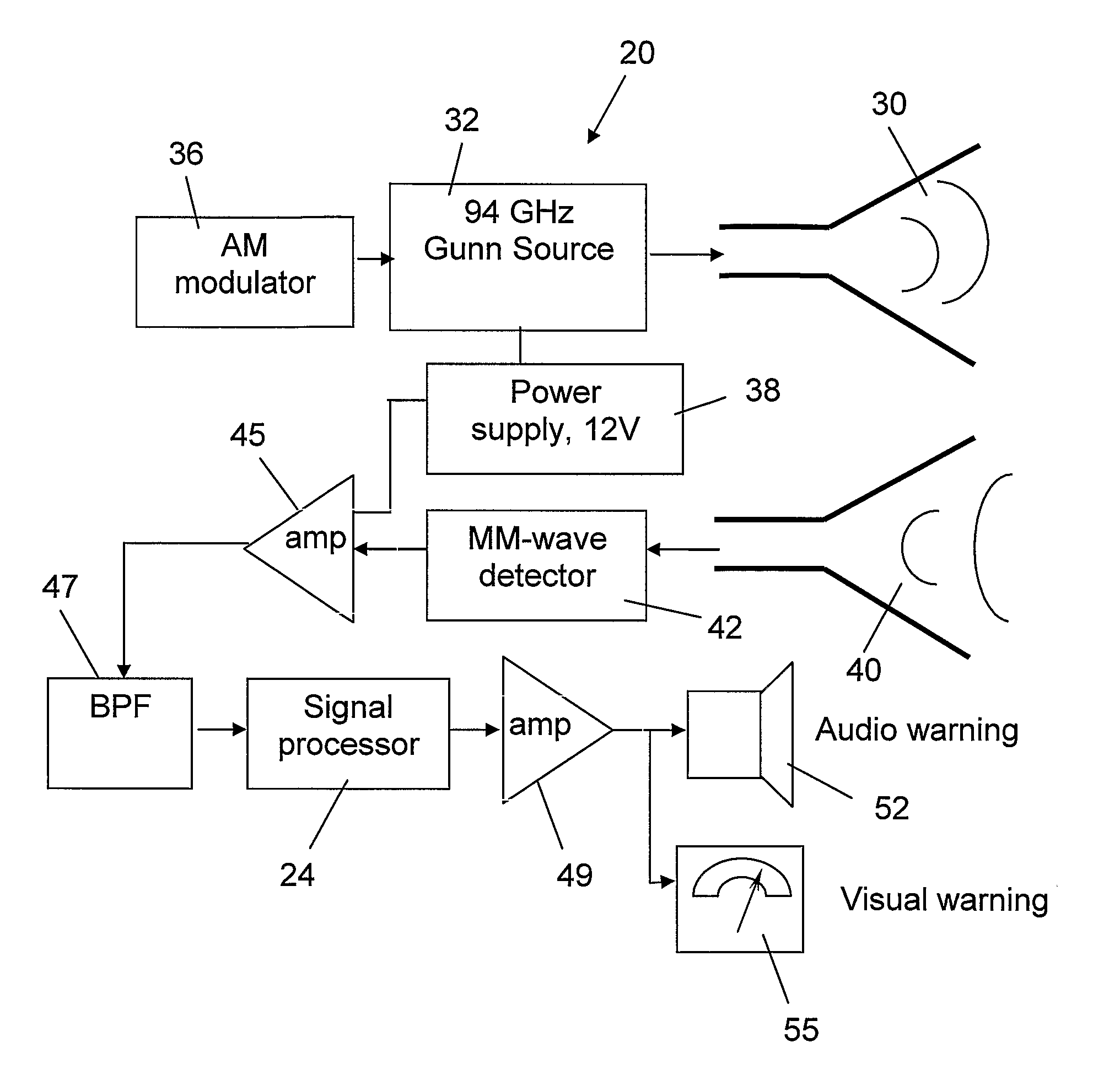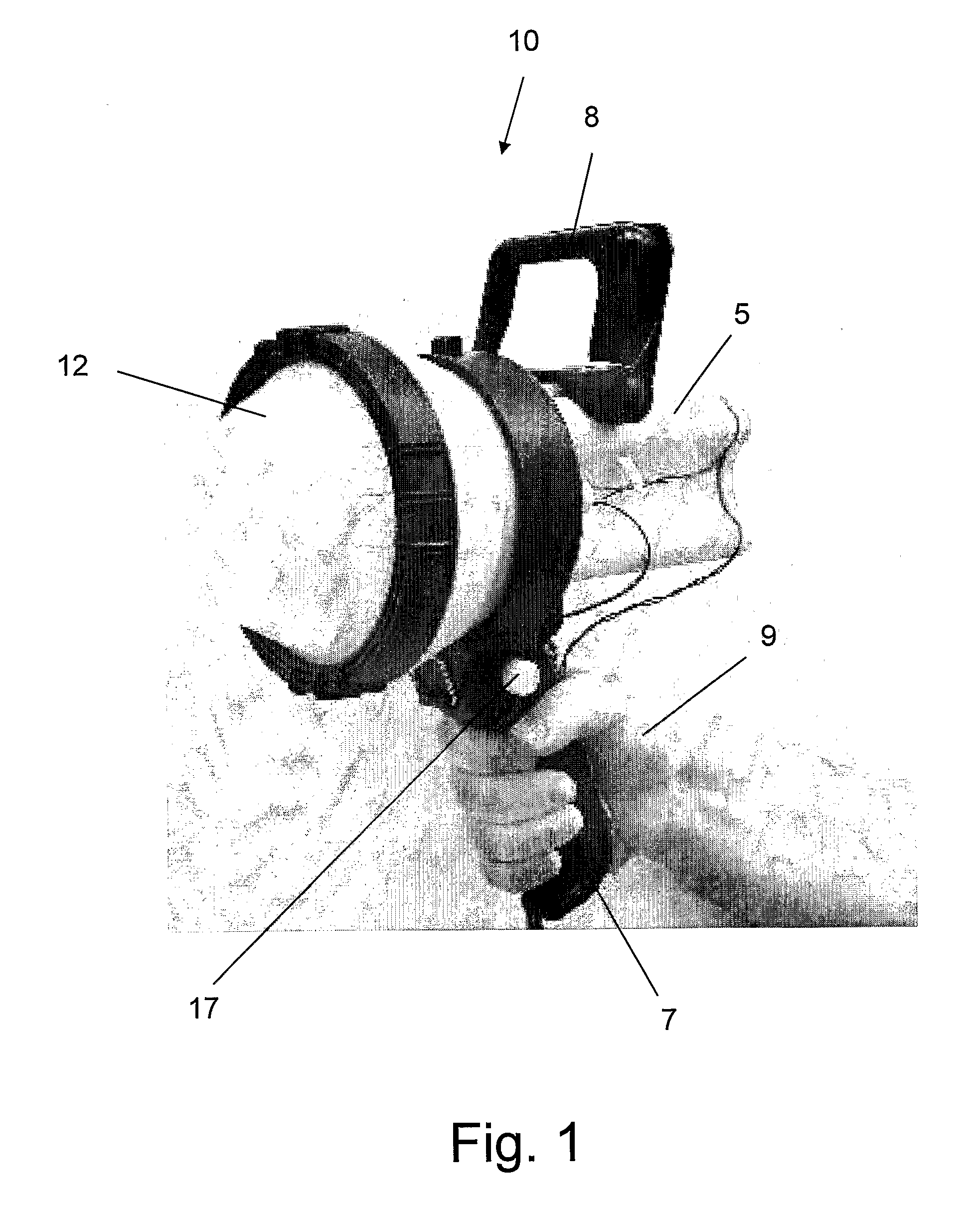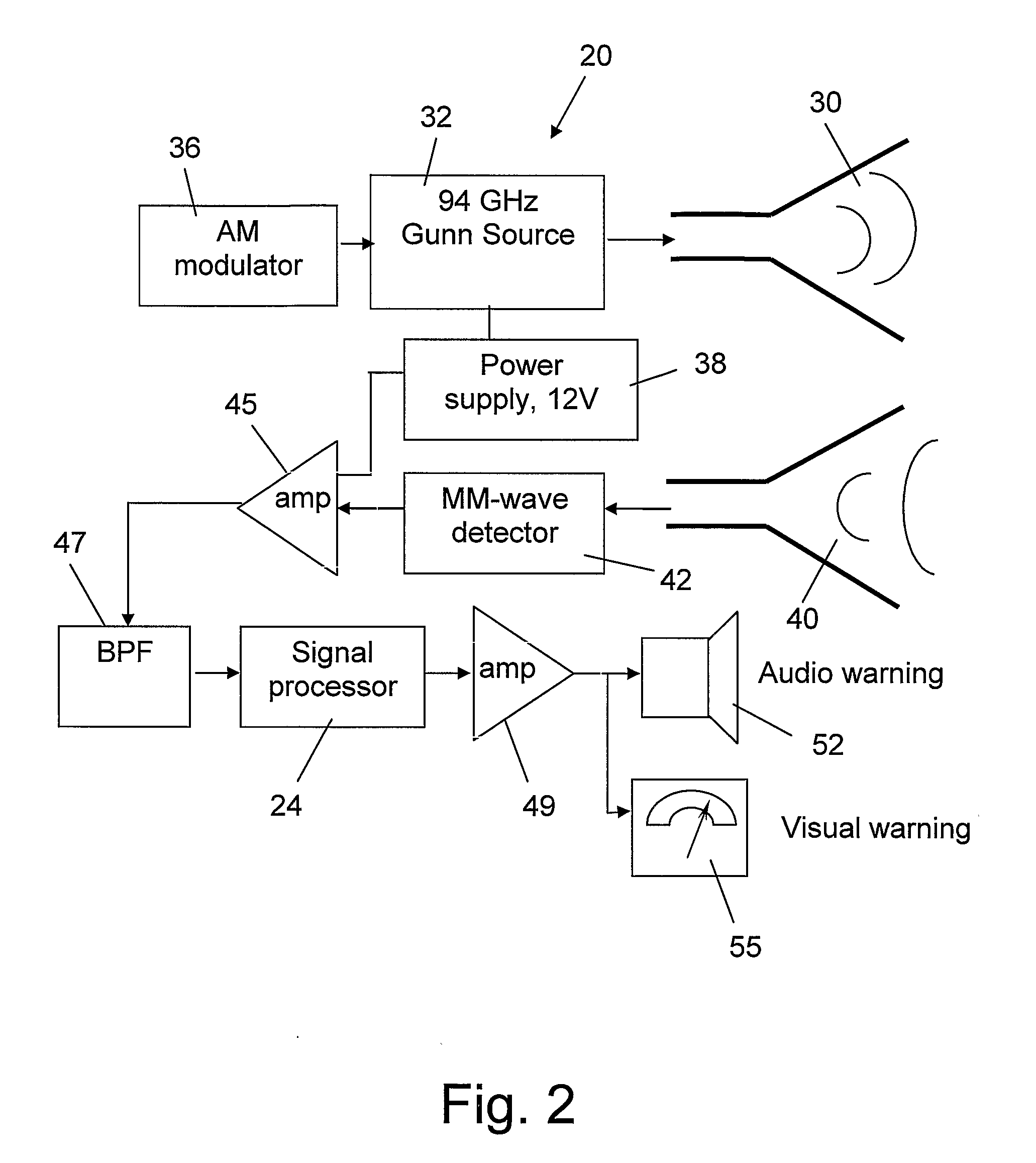Hand-held device and method for detecting concealed weapons and hidden objects
a technology of concealed weapons and hand-held devices, applied in the field of detection, can solve problems such as exposing the user to a potentially hazardous and unanticipated situation, chemical explosives, and detection devices based on electromagnetic waves cannot detect plastic or ceramic weapons, and achieve the effect of improving the uniformity of reflection
- Summary
- Abstract
- Description
- Claims
- Application Information
AI Technical Summary
Benefits of technology
Problems solved by technology
Method used
Image
Examples
example
[0084]In order to check the feasibility of using the detection device of the invention to distinguish between different types of materials the maximum voltage of the reflected signal from various target objects made of different metallic and non-metallic materials and having different shapes were tested. The measurements were made using standard conditions, i.e. distance, strength of transmitted signals, frequency, etc.
[0085]A 20-L plastic container filled with tap water served as a simulation of a human body. Since a combination of the human body and a plastic carton, in which a potentially dangerous object is concealed, is commonly found during detection operations, such a combination was simulated by placing test objects having a height of 25 cm containing different types of concealed material such as plastic, cardboard, Teflon, ceramic, cheese, and soap, in front of the plastic container. A Shottky detector was positioned at a distance of 1 m from a test object irradiated by mil...
PUM
 Login to View More
Login to View More Abstract
Description
Claims
Application Information
 Login to View More
Login to View More - R&D
- Intellectual Property
- Life Sciences
- Materials
- Tech Scout
- Unparalleled Data Quality
- Higher Quality Content
- 60% Fewer Hallucinations
Browse by: Latest US Patents, China's latest patents, Technical Efficacy Thesaurus, Application Domain, Technology Topic, Popular Technical Reports.
© 2025 PatSnap. All rights reserved.Legal|Privacy policy|Modern Slavery Act Transparency Statement|Sitemap|About US| Contact US: help@patsnap.com



